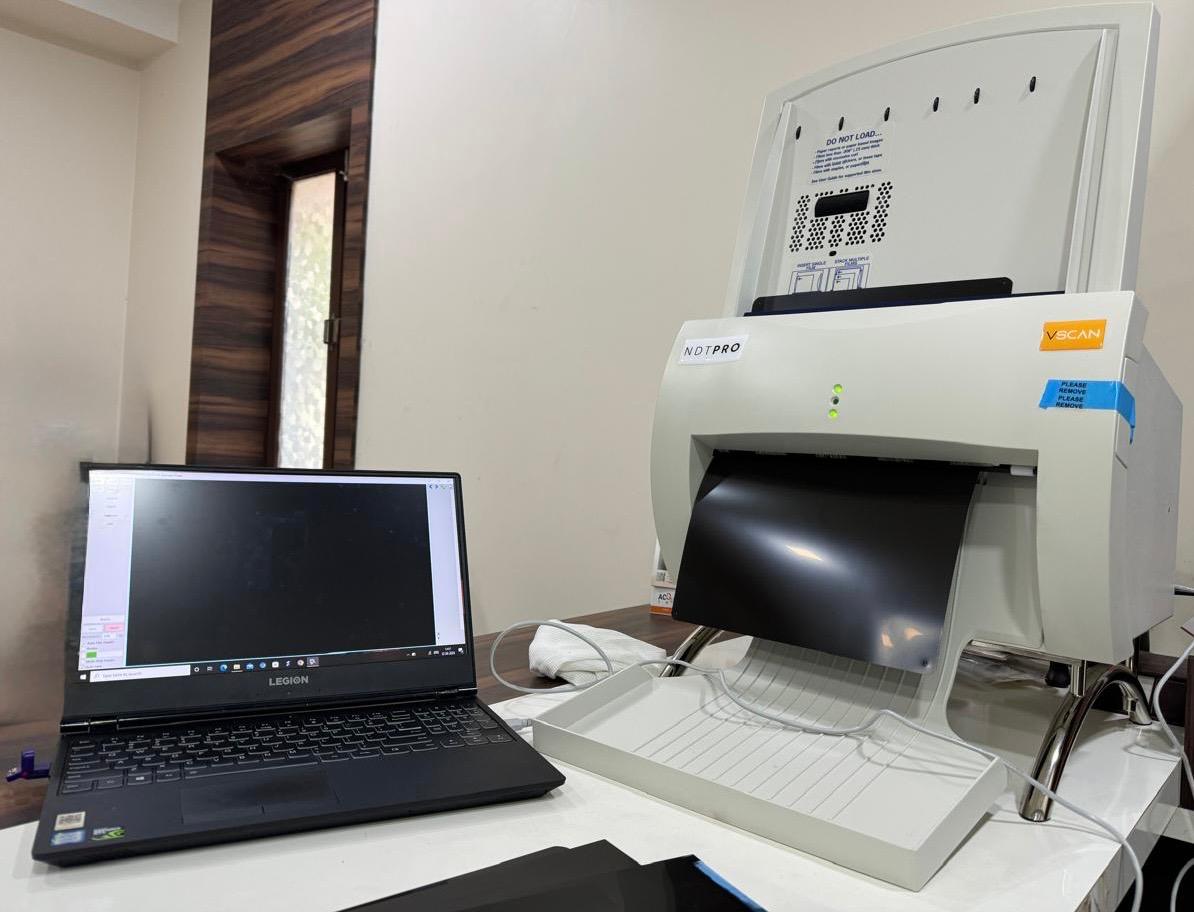
Industrial Film Digitization is a specialized branch of film digitization focused on converting radiographic films used in Non-Destructive Testing (NDT) into high-quality digital formats. This process is essential for industries that rely on radiography to evaluate the integrity of materials, welds, and components.
Scaanray Metallurgical Services has been a pioneer in film digitization since 2015, when the Vidar NDT Pro system was first introduced at NDE 2015, Hyderabad. The company operates with a team of qualified professionals in compliance with SNT-TC-1A and ISO 9712 standards.
The V-Scan system (formerly known as Vidar) is certified to meet both ASTM and ISO standards, ensuring accurate, reliable, and traceable digital radiographic conversions.
What is Industrial Radiography?
Radiography is a non-destructive testing (NDT) method that uses X-rays or gamma rays to inspect the internal structure of materials and components without causing damage. In various industries, including:
- Aerospace
- Automotive
- Construction
- Manufacturing
- Oil and gas
Radiography helps detect defects such as cracks, voids, corrosion, and weld flaws.
Why Digitize Industrial Radiographic Film?
Digitizing industrial radiographic film offers several advantages:
- Improved Efficiency: Digital images can be quickly accessed, shared, and analyzed, streamlining the inspection process.
- Enhanced Image Quality: Digital processing techniques can enhance image contrast, brightness, and sharpness, improving defect visibility.
- Reduced Storage Costs: Digital storage eliminates the need for bulky physical film archives, saving space and costs.
- Long-Term Preservation: Digital files are more stable and less prone to degradation than physical films, ensuring long-term preservation of inspection data.
- Integration with Digital Workflows: Digital radiographic images can be easily integrated into digital workflows for reporting, analysis, and archiving.
The Industrial Film Digitization Process
The process of digitizing industrial radiographic film is similar to general film digitization but with specific considerations:
- Film Preparation: Industrial radiographic films are often larger and denser than other types of film and may require specialized cleaning and handling.
- Scanning: High-resolution film scanners with a wide dynamic range are used to capture the details in industrial radiographic films.
- Calibration and Standardization: To ensure accurate and consistent results, the digitization process must be calibrated and standardized according to industry standards.
- Image Enhancement: Digital processing techniques may be used to optimize the image for analysis, such as adjusting contrast, applying filters, and measuring dimensions.
- Digital Archiving: Digitized images are stored in a digital archive system with appropriate metadata for easy retrieval and management.
Key Considerations for Industrial Film Digitization
- High Resolution and Dynamic Range: Industrial radiographic films often contain subtle variations in density that provide critical information about the inspected object. The digitizer must capture this information with high resolution and dynamic range.
- Calibration and Standardization: To ensure accuracy and consistency, the digitization process must adhere to industry standards such as ASTM E2446 and ISO 14096.
- Image Quality: The digitized images must meet specific quality requirements to ensure that defects are not missed or misinterpreted.
- Data Integrity and Security: The digitized images must be stored securely and with appropriate backup and disaster recovery measures to ensure data integrity.
- Compliance: In some industries, there may be regulatory requirements for the storage and management of radiographic data. The digitization process must comply with these regulations.
Applications of Industrial Film Digitization
Industrial film digitization is used in a wide range of industries, including:
- Aerospace: Inspecting aircraft components for defects.
- Oil and Gas: Examining pipelines and pressure vessels for corrosion and cracks.
- Manufacturing: Ensuring the quality of welds and castings.
- Construction: Evaluating the integrity of concrete and steel structures.
Nuclear: Inspecting nuclear reactor components.
